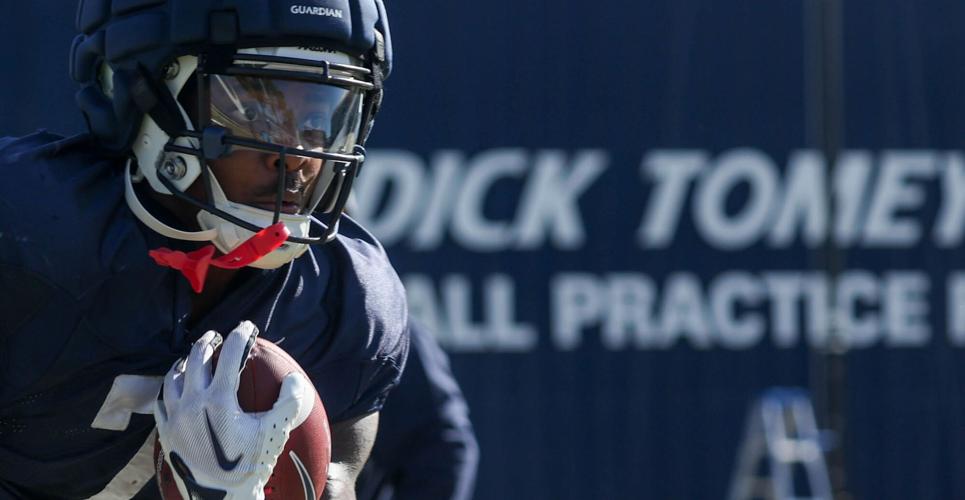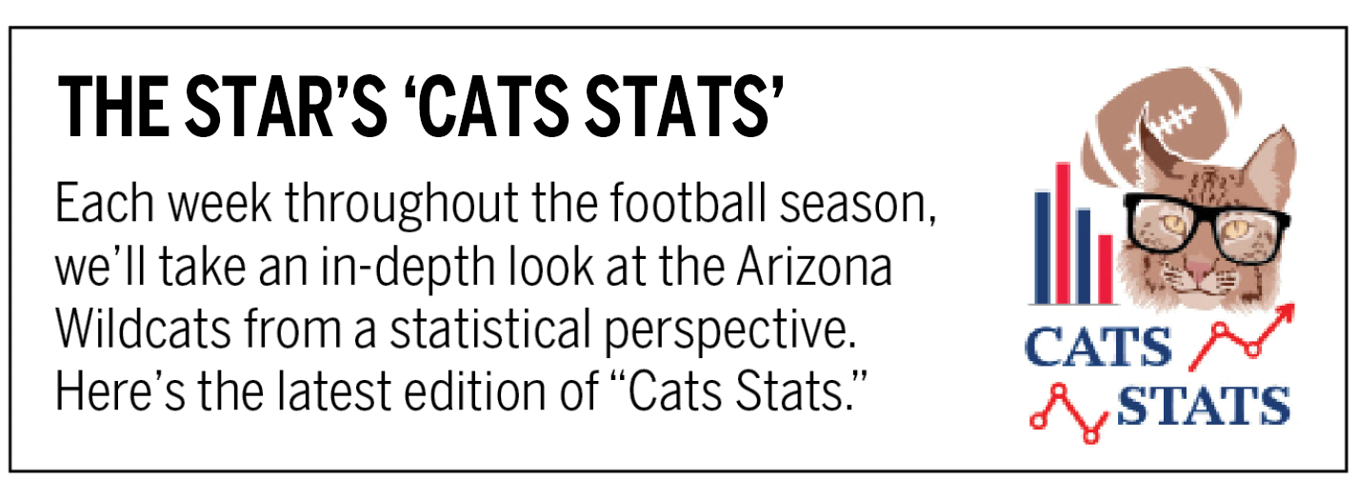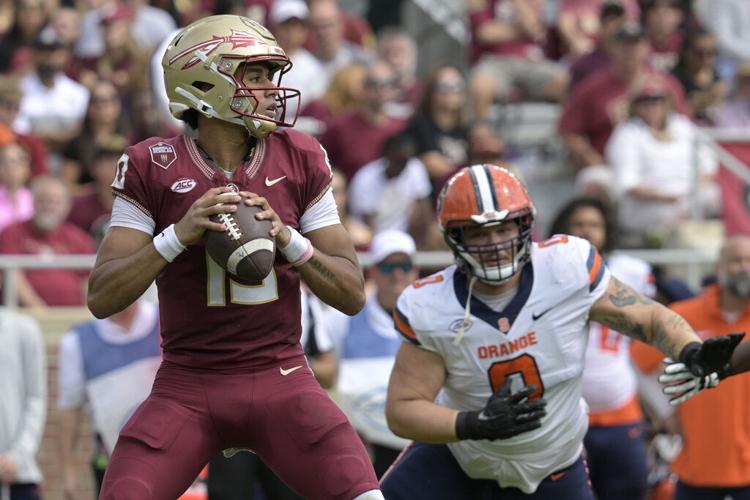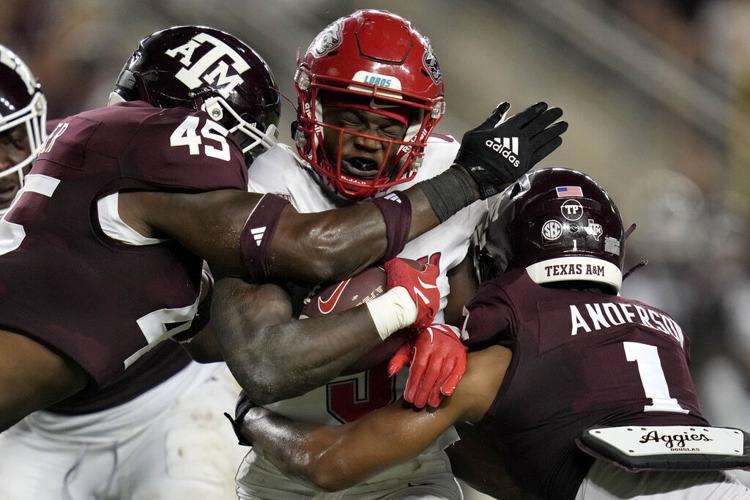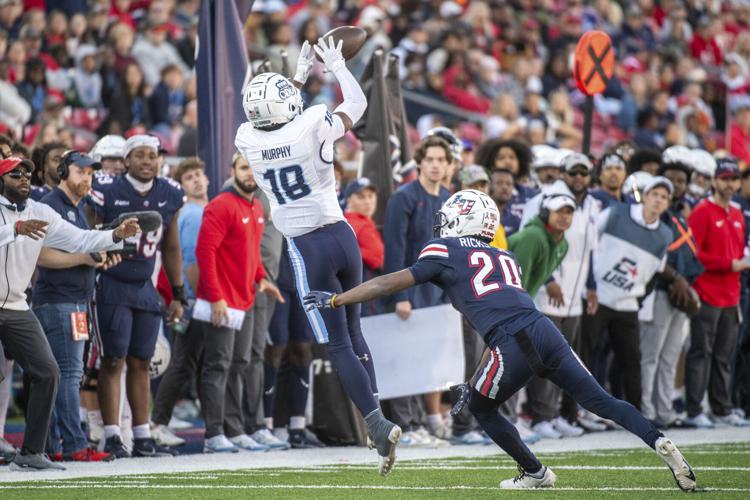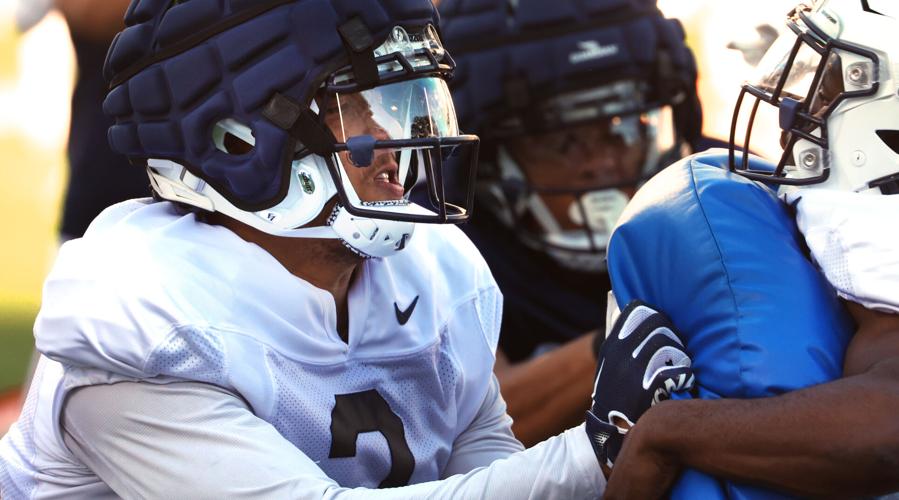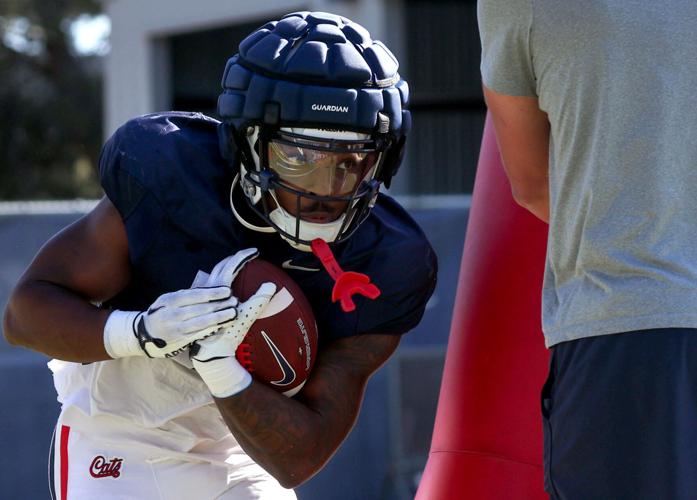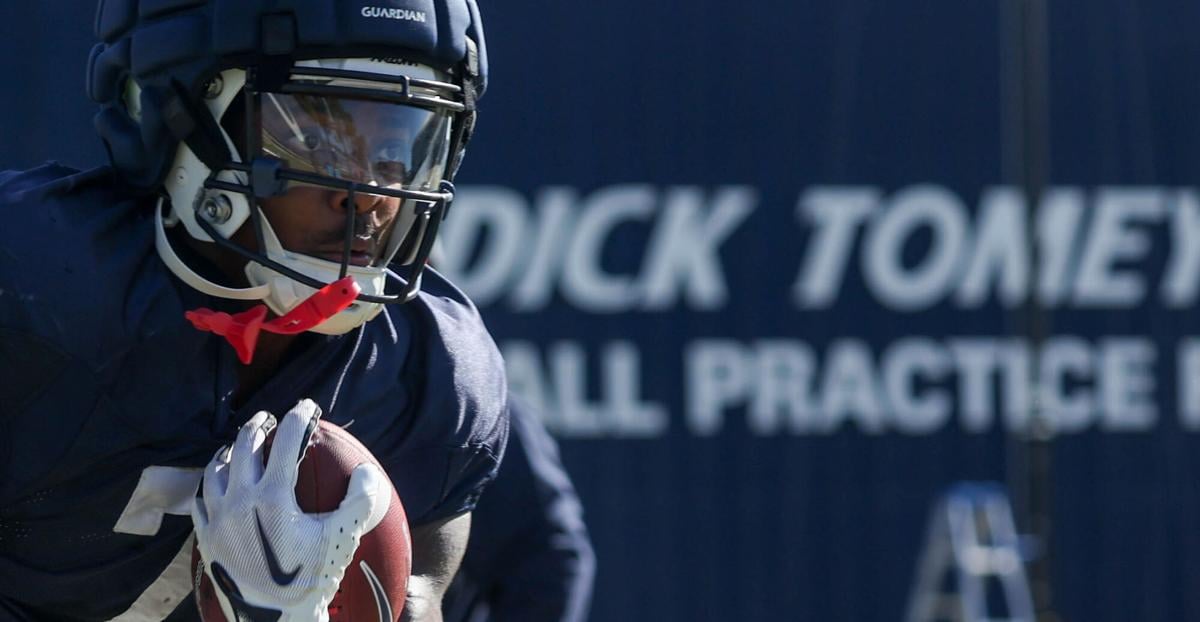Inspired by the restaurateurs who help us endure Tucson’s unrelenting heat, we bring you “Cats Stats: Summer Special.”
The Arizona football team recently announced a batch of post-spring transfers, growing the Wildcats’ 2024 transfer class to 24 players.
One of the advantages of utilizing the transfer portal to build out a roster is the availability of applicable data. Many of Arizona’s newcomers have played hundreds of snaps of college football.
Tapping into the vast database at Pro Football Focus, we dug into some of the numbers those players have accumulated. Below, we spotlight 10 players who, for the most part, have played enough snaps at the FBS level to establish quantifiable traits. What stands out about each guy?

DL Jarra Anderson
Anderson had only 1.5 sacks with Memphis last season as a true freshman, but don’t let that stat fool you. Anderson ranked third among interior defensive linemen in the American Athletic Conference in pass-rush win rate at 19.4% in what PFF defines as “true pass sets.” Those plays remove screens, rollouts and play-action passes from the mix.

Arizona running back Quali Conley participates in hitting drills during spring football practice on April 11. Conley averaged 4.31 yards after contact per rushing attempt in 2023 at San Jose State.
Anderson lined up almost exclusively in the A-gap (between the center and guard) and B-gap (between the guard and tackle), so he did most of his damage from the inside. That would be a logical place for the UA to deploy the 6-2, 260-pounder.
RB Quali Conley
Conley is one of several former San Jose State players who followed Brent Brennan to Tucson. Conley played three seasons at FCS Utah Tech before transferring to SJSU. He proved in his lone FBS season that he belongs.
Conley averaged 4.31 yards after contact per rushing attempt, the 10th-best mark in the nation. Iowa State’s Abu Sama III led the country in that stat at 6.55; Arizona’s Jonah Coleman (now at Washington) ranked second at 5.09.
Conley ranked 16th nationally among running backs in yards after catch with 311. He had seven catches for 110 yards (150 after the catch) on screen passes. Expect the screen game to be a big part of Dino Babers’ offense.
RB Jacory Croskey-Merritt

Arizona-bound running back Jacory Croskey-Merritt, shown vs. Texas A&M on Sept. 2, 2023, rushed for 1,190 yards and 17 touchdowns this past season.
Like Conley, Croskey-Merritt began his college career at the FCS level (Alabama State) before transferring to an FBS school (New Mexico). He had a spectacular season in Albuquerque but did it in a slightly different way than Conley.
Croskey-Merritt ranked 25th nationally in yards after contact per attempt (3.98) while also cracking the top 20 in missed tackles forced. Croskey-Merritt tied for 17th in the country with 64 MTF; he had the third-fewest rushing attempts (188) in that subset.
Croskey-Merritt tied for 10th nationally with 39 runs of 10-plus yards and ranked 12th with 70 rushing first downs.
QB Adam Damante
We made an exception regarding FBS snaps for Damante, who spent his freshman year at FCS Northern Arizona.
Damante displayed impressive accuracy with the Lumberjacks, posting a 76.1% adjusted completion rate. Adjusted completion rate is the percentage of aimed passes that are thrown on target (even if dropped). UA starter Noah Fifita had an adjusted completion rate of 78.4% last year.

Syracuse defensive lineman Kevon Darton, right, pursues Florida State quarterback Jordan Travis during the first half of their game on Oct. 14, 2023, in Tallahassee, Florida. Darton is now at Arizona.
Damante did most of his work on short passes. Ninety-two of his 115 completions were thrown behind the line of scrimmage (40) or under 10 yards (52). His average depth of target (ADOT) was 6.9 yards. Fifita’s was 7.8.
DL Kevon Darton
Given that Darton is undersized (5-11, 271) for an interior defensive lineman, we expected his pass rushing to stand out the most. Although he upped his PFF pass-rush grade by more than 10 points in his last season at Syracuse — and had a career-high 21 QB pressures — he distinguished himself more as a run defender.
Darton tied for fourth among interior defensive linemen in the ACC with 17 “stops” in the run game. PFF defines a “stop” as a tackle that constitutes a failure for the offense.
Darton posted a run-game stop rate of 7.4%, which was tied for 11th in the ACC.
OLB Lance Keneley
If Keneley gets his hands on you, you’re most likely going down.
PFF charged Keneley with only six missed tackles in four seasons at Stanford. His missed-tackle rate of 9.4% last season was ninth best among edge rushers in the Pac-12.
Keneley also has committed only one penalty in his college career in 853 defensive snaps.
It’ll be interesting to see how Arizona utilizes Keneley, who lined up as an outside linebacker on 77% of his defensive snaps last season. The scheme Duane Akina inherited from Johnny Nansen typically calls for four down linemen, though one of the edge rushers could line up in a two-point stance.
OL Shancco Matautia
Matautia transferred to Arizona from New Mexico State, where he played three seasons and started most of the past two years. His PFF grades reflect annual improvement.
Matautia upped his run-blocking grades from 41.9 to 51.7 to 59.0, and he bumped his pass-blocking grades from 47.6 to 53.9 to 69.1.
Playing exclusively right guard, Matautia allowed only five pressures and zero sacks in 314 pass-blocking snaps last season. The year before, he yielded 13 pressures and three sacks in 213 snaps.

Old Dominion’s Reymello Murphy, left, catches the ball in front of Liberty’s Dexter Ricks Jr. during the second half a Nov. 11, 2023, matchup in Lynchburg, Virginia.
Matautia, who has two years of eligibility left, appears to be a player on the rise.
WR Reymello Murphy
Murphy spent last season at Old Dominion after previously playing at College of San Mateo. The Monarchs used him in a very specific way.
Murphy lined up wide 88.1% of the time (vs. 11.9% in the slot), and ODU targeted him downfield more often than not. Twenty-nine of Murphy’s 47 targets (61.7%) came on passes thrown 10 or more yards past the line of scrimmage, including 21 of 20-plus yards. Murphy caught eight of those 20-plus-yard passes, totaling 308 yards and three touchdowns.
Murphy’s ADOT of 17.7 yards ranked fourth among wide receivers in the Sun Belt Conference. Seventeen of his 28 receptions — 60.7% — went for first downs.
TE Sam Olson
Olson played four seasons at San Jose State, so he knows exactly what Brennan and tight ends coach Matt Adkins want. What can UA fans expect from Olson?

Arizona defensive lineman Tre Smith hits a padded teammate as the defensive unit works out in the Wildcats' 2023 spring practice session at Arizona Stadium.
He had his best year last season, including averaging 7.0 YAC per reception — the highest figure among tight ends in the Mountain West Conference (minimum 24 targets). Olson’s average of 1.67 yards per route run ranked second.
Olson also excelled in contested-catch scenarios, going a perfect 4 for 4 to improve his career mark to 7 of 10. He had a drop rate of 10% the past two seasons, down from 18.2% his first two years.
DE Tre Smith
Another San Jose State transfer, Smith broke out in every facet with the Spartans in 2023.
Smith ranked third among edge rushers in the MWC in total defensive stops (31), fourth in QB pressures (47) and fifth in missed-tackle rate (6.9%).
Smith ranked first in that subset in run-defense stops with 25, a figure that was tied for 12th nationally. His run-defense stop rate of 7.6% tied for sixth in the MWC.
At 6-5, 255, Smith profiles as a strong-side defensive end. His PFF metrics suggest an all-around skill set that should make him a worthy successor to Taylor Upshaw at that position.


